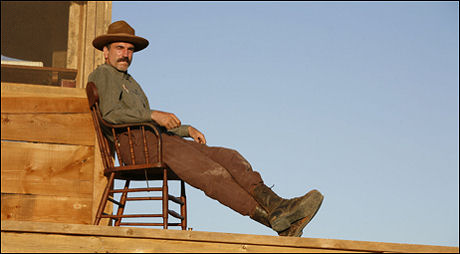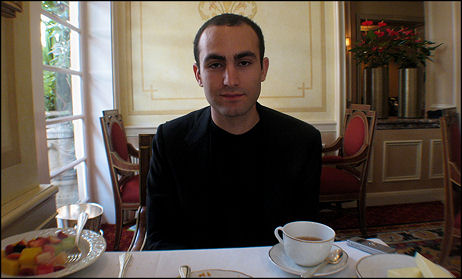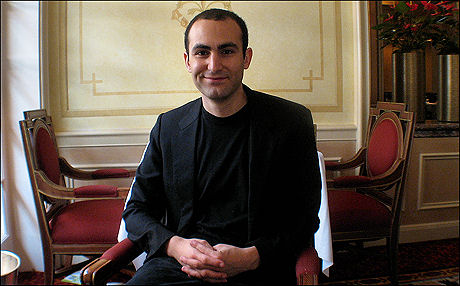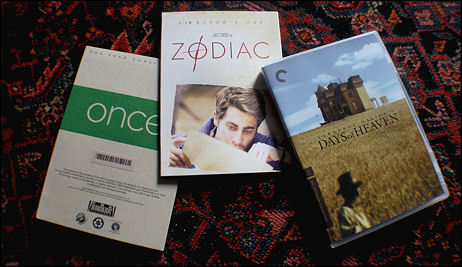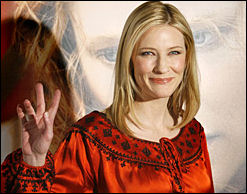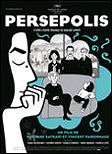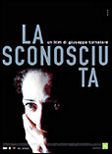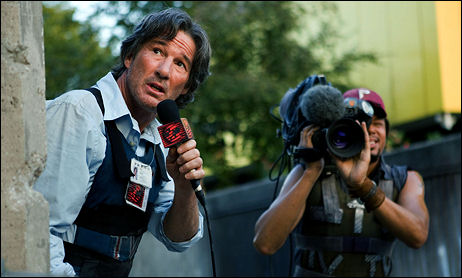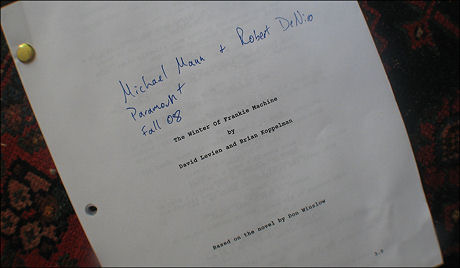Too many indie dramas are flooding the well. Cultured moviegoer consciousness is being diluted and depleted by too many choices. Nothing’s happening, nobody’s catching any waves and “we’re all suffering,” says Focus Features chief James Schamus to L.A. Times reporter Rachel Abramowitz. “At least someone should be succeeding. It’s as bad a fall [season] as I’ve ever seen.”
I agree — there’s just too much out there, and that winds up hurting the whole field. But Abramowitz skirts the issue of quality and/or attractiveness in discussing the higher-profile underperformers.
And she doesn’t venture within a country mile of the other big factor, which is that urban blue audiences that go to occasional indie films are just like rural red-staters in the sense that 95% of them can’t get beyond subject matter. That’s all the vast majority wants to know or talk about. Not how brilliantly written, well acted, passionate, true-to-life and thematically potent the film is (or isn’t), but “what’s the story about?” And, of course, “who’s in it?”
“Why haven’t more people shown up to see A Mighty Heart?,” Abramowitz asks. Could it be because the leave-us-aloners and the too-sooners didn’t want to see a brilliant Michael Winterbottom film — so powerfully composed and finely edited it felt like something directed by Michael Mann — about a good-guy journalist who gets his head cut off by Islamic bad guys?
Why didn’t more people see In the Valley of Elah? Uh, let’s see…because the leave-us-aloners and the too-sooners smelled Iraqi sand in the margins of this deeply touching, beautifully acted (by each and every actor, and not just Tommy Lee Jones, Charlize Theron and Susan Sarandon) father-son story mixed with a whodunit? Because you can lead a horse to water but you can’t make him drink?
Why, she asks, hasn’t there been more interest in Lars and the Real Girl? Uhm…because there aren’t enough people out there who want to hang with a blue-collar simpleton (jowly, moustache, work boots, flannel shirts) who falls in love with a life-size plastic love doll? Because, you know…the average person finds this idea ludicrous, particularly when the film shows dozens and dozens of people (including hospital administrators) pretending out of sympathy and compassion for this borderline retard that the doll is real also?
(I finally saw Lars last night, and while I was genuinely moved by Ryan Gosling‘s lead performance, especially his tearful farewell scene by the lake, the film is obviously too caught up in its own conceit to expect any kind of wide popularity. America is not Park City, and it’s not mid January.)
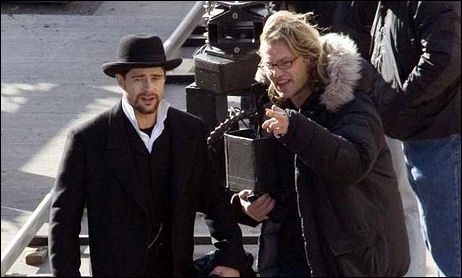
Brad Pitt, Andrew Dominik
“Films like Richard Gere‘s The Hunting Party, Kenneth Branagh‘s Sleuth or the Mark Ruffalo-Joaquin Phoenix film Reservation Road haven’t made even $1 million,” Abramowitz says.
And we all know why, don’t we? One, the Gere film isn’t very good and nobody wants to know from Serbia-Bosnia-Herzogovina…leave us alone!…bad vibes like Iraq!. Two, Sleuth is too much of an arch, old-world parlor drama with a bizarre third-act twist that goes off the rails. And three, Reservation Road, which wasn’t very well reviewed, too often feels like a coarse and unrefined acting-exercise film
Abramowitz notes that “a crew of classy star vehicles from studios — essentially art films with bigger budgets — has [also] been flailing at the box office. Despite George Clooney‘s tub-thumping, Michael Clayton has earned only $21 million.” And that’s because people sensed corporate complexity and a lack of emotional undertow and figured, “Looks like a smart, well-made film but you know what? Netflix.”
Cate Blanchett‘s Elizabeth: The Golden Age has only earned $11 million because — is everyone sitting down? — it’s an outrageously awful, self-mocking costume drama.
Why has Andrew Dominik and Brad Pitt‘s The Assassination of Jesse James by the Coward Robert Ford earned only $2 million? Uhmm…because people don’t want to know from exquisitely made western art films that feel like a Terrence Malick time-machine transportation? Because they’re like, uhm…lazy and sometimes moronic in their judgments and determinations?
Abramowitz notes that ThinkFilm will “wade into the choppy waters” this coming weekend with director Sidney Lumet‘s Before the Devil Knows You’re Dead, which features Philip Seymour Hoffman, Ethan Hawke and Marisa Tomei.
I slipped into a preview screening of this film last night. It was showing to a group of KCET subscribers — an older, fair-minded group that likes adult prestige films — and you just could feel the lack of excitement in the room as they walked out. You could cut it with a knife. They’d just seen one of the year’s absolute best and most of them were thinking “hmmm, downer….not very uplifting!”
Postscript: Apologies for the typos and clumsy sentences in this piece after I first posted in the late morning. I had to run out to do an interview with Kite Runner star Khalid Abdalla before doing a fine edit. Everything’s fixed now, but I die a little bit each time I post a typo and awkwardly phrased sentence and don’t do anything to fix it for an hour or two.




